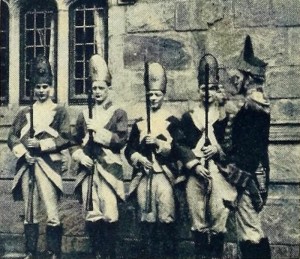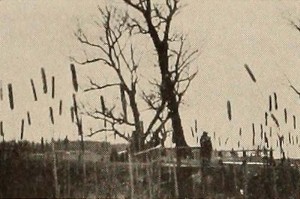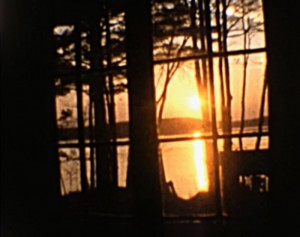
"Tom Jones, about 5000 ft., 16 mm, produced by the Purity Players of Yale University under the direction of S. Winston Childs, is the first amateur super-feature. The story is based on Fielding's Tom Jones and adheres with remarkable faithfulness to this famous novel, while many of the sets and costumes exhibit a care and an historical accuracy that has not since been equaled in amateur work. To those who have interest in 18th century literature, the picture will be particularly valuable." Movie Makers, Sept. 1930, 569.

"In Trees, whose subtitle describes it as a picture poem, we find what is generally admitted to be the masterpiece of that superb artist of the cinema, the late Ripley W. Bugbee, whose work so delighted his fellow members of the Amateur Cinema League and whose untimely death took from amateur cinematography one of its finest workers. This film is the realization of what Movie Makers has often counseled — setting film to music, instead of the course usually followed in theatrical pictures of setting music to film. The footage is planned to gear in with the musical setting of Joyce Kilmer's popular verse, but, since that setting is brief, other music, excellently chosen, is added to the scoring. The music of the poem is played once orchestrally, then other selections are offered, and the presentation concludes with a baritone voice singing the musical setting through completely. In this last part of the film, there is admirable synchronism, the scenes illustrating the words very accurately. Within the framework of this mechanism, Mr. Bugbee placed some of the loveliest 16mm. Kodachrome footage that has ever been accomplished. The motion is all that of nature, no persons appearing, but that motion has tempo and rhythm, as well as amazing beauty. There are trees in all kinds of movement, and to them are added scenes of clouds, moving water, grasses, flowers and birds. Without the record accompaniment, one would find, in Trees, Kodachrome footage of the highest order; with the musical addition, there is something that, within its limited scope, has never been bettered." Movie Makers, Dec. 1938, 597, 617.

Film treatment of the poem "When the Frost Is On the Punkin" by James Whitcomb Riley. Intertitles with text from the poem are interspersed among images that match the themes and content of the poem. The scenes include shots of harvest work, fall scenery, turkeys, and pumpkins.
Total Pages: 5